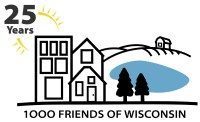Placemaking & Walk Appeal

By following the principles of placemaking and designing our places to have better walk appeal, we encouraged more people to walk, bicycle, and take transit, which will take some cars off the road and make us all safer and healthier.
According to the Project for Public Spaces, placemaking capitalizes on a local community’s assets, inspiration, and potential, and it results in the creation of quality public spaces that contribute to people’s health, happiness, and well-being.
The Principles of Placemaking have the potential to transform underutilized public spaces into vibrant community centers where people congregate and add to the vitality of a community.
The principles of placemaking can also be used to design walkable neighborhoods.
A walkable neighborhood has all of the things people need located closely together: grocery stores, schools, libraries, parks, pharmacies, restaurants, offices, coffee shops, clothing stores, places of worship, etc. Research shows that most people are willing to walk 5 minutes on any street to get to work, school, or the store. Some people will walk 10 minutes, but very few will walk 15 or more mintues, especially in January!
Unfortunately, many of our cities and towns are designed for dependence on an automobile. People live far away from places they need to go each day. This trend is slowly reversing as people move back into city centers, but in the meantime we can work to make our streets more walkable by increasing their Walk Appeal.
What makes a street appealing to people for walking?
First, the street must feel safe. Most of our streets are designed with the goal of moving vehicles as quickly as possible, which can make people feel uneasy as vehicles whip by. To help fix this, we could protect people on foot by positioning sidewalks away from traffic, separated by a terrace with street trees that would also provide shade and block wind in the winter. Where possible we could create intersections with curb bumpouts, center island refuges, and longer crossing times so that people walking can cross safely.
Second, to get more people walking the places we need to reach each day have to be closer together. Unfortunately, the ease of getting around by automobile has made it so that places are spread out, discouraging active travel.
Third, research shows that people are willing to walk farther if the buildings, shops, and stores they pass on their walk are close to the sidewalk and have windows and interesting facades built to be seen at walking speed.
By following the principles of placemaking and designing our places to have better walk appeal, we can encourage more people to walk, bicycle, and take transit, which will take some cars off the road and make us all safer and healthier.
